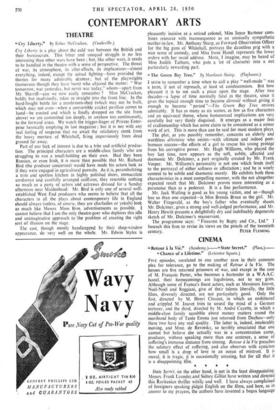The Green Bay Tree." By Mordaunt Shairp. (Playhouse.) I SEEM
to remember a time when to call a play " well-made " was a term, if not of reproach, at least of condescension. But how pleasant it is to see such a piece upon the stage. After two decades—a lapse of time normally fatal in the theatre, since it gives the topical enough time to become demode without giving it enough to become " period "—The Green Bay Tree revives admirably. It has as many as six scenes, as few as five characters and an equivocal theme, whose homosexual implications are very carefully but very thinly disguised. It emerges as a major feat of craftsmanship which has some claim to be considered as a minor work of art. This is more than can be said for most modern plays. The plot, as you possibly remember, concerns an elderly and worthless dilettante who resists—with ultimate and indeed post- humous success—the efforts of a girl to rescue his young protégé from his corruptive power. Mr. Hugh Williams, who played the boy last time, now appears as the soft, subtle, affected and daemonic Mr. Dulcimer, a part originally created by Mr. Frank Vosper. Mr. Williams's personality is not one which lends itself to the portrayal of either softness or affectation ; and he is wisely content to be subtle and daemonic merely. He exhibits both these characteristics in a most compelling manner, with the not altogether expected result that Mr. Dulcimer proves more interesting as a paranoiac than as a pederast. It is a fine performance.
Mr. Jack Watling is good as his young victim, and so—though less so than one expected—is Miss Brenda Bruce as the girl. Mr. Walter Fitzgerald, as the boy's father who eventually shoots Mr. Dulcimer, gives a strong and well-judged performance, and Mr. Henry Hewitt presents a delightfully dry and indefinably degenerate sketch of Mr. Dulcimer's manservant.
The programme says: " Firearms by Bapty and Co., Ltd." I beseech this firm to revise its views on the pistols of the twentieth










































 Previous page
Previous page